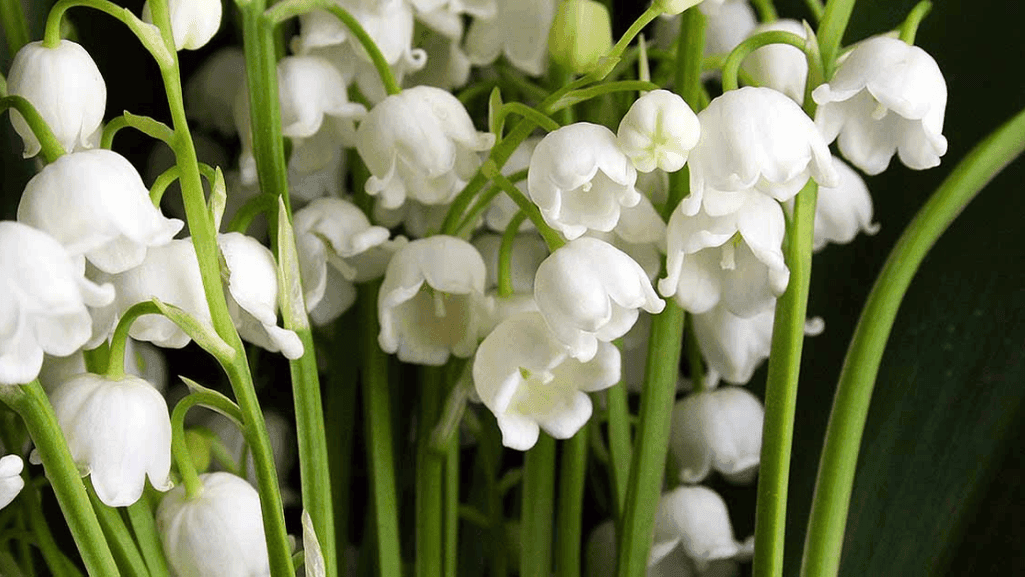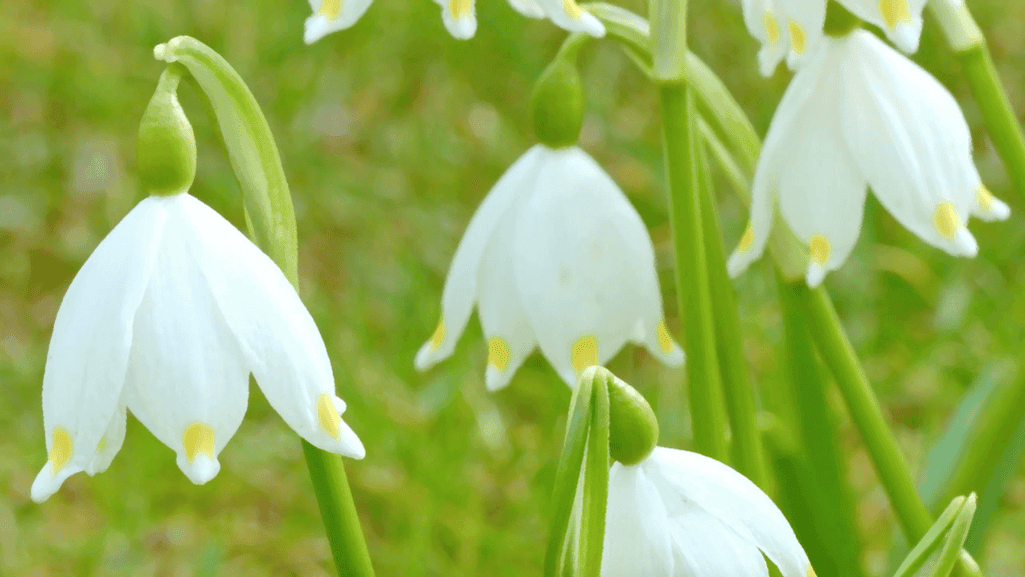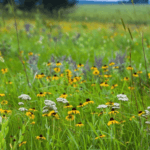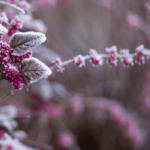
Beautiful flowers gardenia Plants For Your homes

Make your garden more beautiful with lily of the valley, loved by gardeners and flower fans. This lily of the valley bulb planting guide will help you every step of the way. It’s easy to learn how to plant lily of the valley bulbs and see their lovely flowers in spring.
The Lily of the Valley, or Convallaria majalis, is more than just a plant. It’s a symbol of culture and history, woven into many traditions and ceremonies worldwide. Its fragrant blooms and status as the signature scent of spring show its beauty and danger.
This small, elegant plant has been part of big events. It was in Queen Elizabeth II’s coronation bouquet in 1953, symbolizing purity and happiness. The Lily of the Valley is also in the bouquets of Queen Victoria and Kate Middleton. Christian Dior called it a lucky flower.
Aside from its royal ties, the Lily of the Valley is important in botany and medicine. It’s toxic, but was once used for heart conditions. It was listed as a heart tonic in the British pharmacopoeia of 1949.
As a lily of the valley planting guide will tell you, it loves shaded gardens or cottage gardens. It creates a green carpet when not blooming. Best to spread it by dividing rhizomes or pips, as seeds take a long time to flower.
| Cultural Symbol | Event | Year |
|---|---|---|
| Lily of the Valley | Queen Elizabeth II’s Coronation Bouquet | 1953 |
| Lily of the Valley | Kate Middleton’s Wedding Bouquet | 2011 |
| Lily of the Valley | Christian Dior’s Lucky Flower | Not Applicable |
| Lily of the Valley | Medicinal Use in World War I | During WWI |
The fragrant blooms of Lily of the Valley have uses beyond looks and medicine. They’re part of folklore too. People say its scent helps nightingales find mates and fairies use its flowers as cups.
The Lily of the Valley captures the signature scent of spring. It’s more than a plant; it’s a symbol of elegance and change. Its presence in gardens and bouquets charms people worldwide, making it a favorite for gardeners and flower lovers.
Finding the right spot for Lily of the Valley bulbs is key for their growth and blooms. They need shade and lots of moisture. This guide will show you how to pick the best spot for these lovely plants, following best practices for planting lily of the valley.
Lily of the Valley loves shaded or partly shaded spots, mimicking their natural home. They do well with some sunlight during the day. But, they can also handle full sun or full shade if the soil stays moist.
This balance of light and moisture keeps their flowers bright and long-lasting. For tips on picking plants for your climate, check out this resource.
The ideal soil conditions for lily of the valley mean well-draining soil with lots of organic stuff like compost or manure. These help stop water from pooling, which harms the bulbs. To fix poor drainage, try raising the soil or adding perlite or vermiculite.
This makes the soil better for growth, leading to healthier plants.
Picking the right spot for best practices for planting lily of the valley will make your garden look stunning every spring.
Don’t forget to plant at the right depth and distance to let the rhizomes grow and spread. For more gardening tips and how to care for different plants, check out this article.
Knowing the best time to plant lily of the valley bulbs is key for a beautiful spring bloom. The ideal time is in the fall. This lets them go dormant over winter, preparing for a strong spring growth. If you miss fall, you can plant in early spring, but make sure they’re dormant.
Seasonal planting for lily of the valley bulbs is crucial for their growth and blooms. Autumn is the top choice, giving bulbs time to settle and grow in winter’s cold. In cooler areas, spring planting works well if the ground thaws before it gets too warm.
| Planting Season | Details |
|---|---|
| Autumn (Preferred) | Allows for natural chilling, ensures vigorous spring blooms; ideal for root establishment. |
| Spring (Alternative) | Suitable for late-thaw regions; bulbs must be planted while still dormant for effective root growth. |
When planning to plant seasonal planting for lily of the valley bulbs, think about your local climate and soil. These plants love shade, fertile soil, and stay moist but well-drained. Knowing this helps them grow well and protects them from the sun and cold.
Planning your planting by the best time to plant lily of the valley bulbs ensures a stunning spring display. It also matches the plant’s natural cycle for the best health and blooms.
Starting to plant Lily of the Valley needs careful planning. This ensures the plants grow well and bloom beautifully. Let’s look at the key steps for a great environment for your bulbs.
To help Lily of the Valley roots grow, prepare the soil well. The soil should be like their natural woodland home, rich in organic stuff. Add lots of compost, ground bark, or manure to improve soil structure, drainage, and nutrients.
This is a key tip for planting Lily of the Valley bulbs. It helps them grow strong and bloom well.
Knowing how Lily of the Valley bulbs, or ‘pips’, look is important for planting. Soaking the pips in warm water before planting helps them wake up. It makes them ready to absorb water and start growing.
When you plant, make sure the top of the pip is just above the soil. Cut the roots back by an inch to help the bulb settle in better.
By using these tips, gardeners can make their Lily of the Valley plants thrive. This creates a beautiful, fragrant area in the garden. It also brings a touch of woodland magic to your space.
Welcome to your step-by-step guide to planting lily of the valley bulbs. This process will add charm and fragrance to your garden. These bulbs can be planted under trees or along borders, making your garden enchanting.
Start by preparing the lily of the valley bulbs, also known as ‘pips’. Cut off any long roots and soak them in water for a bit. This helps them absorb moisture better.
Choose a shady spot in your garden for these flowers. They love to grow under trees or in low-light corners. The soil should be fertile, a bit acidic to neutral, and drain well. Add nutrients if needed to meet these conditions before planting.
Place your bulbs about 4 to 8 inches apart. This lets each plant grow and spread out nicely. Cover the bulbs well, making sure the tips are just above the soil. This helps them grow correctly and healthily.
Water the area well right after planting. This settles the soil and helps the bulbs make good contact with it. Keep the soil moist but not too wet for the first few weeks. This is important for the bulbs to grow well.
This guide makes sure your lily of the valley bulbs will grow and maybe even bloom in their first season. With a little care, your garden will become a beautiful place. These classic plants add charm and beauty to any garden.
After planting your Lily of the Valley bulbs, it’s important to make sure they grow well and come back every year. Good post-planting maintenance is key to their health and long life. Start with a regular watering schedule and keep an eye on them during and after they bloom.
Lily of the valley care means keeping the soil moist, especially in the first 4 to 6 weeks after planting. This helps the roots grow strong. You should give the soil about 1 inch of water each week, from rain or watering.
Checking the soil often helps avoid giving too much or too little water. This keeps the plant happy and healthy.
Once the flowers have gone, taking good care of your plants keeps them ready for next year. Caring for lily of the valley bulbs means letting the leaves stay until they turn yellow. These leaves keep making food and storing energy for next year.
If the leaves start to turn yellow, you can cut them off gently. This keeps your garden neat and healthy.
By following these steps for lily of the valley care, you can enjoy these beautiful flowers for many springs. For more tips on post-planting maintenance, check out gardening guides and resources.
Maintaining and caring for your lily of the valley bulbs means knowing what they like and need. With the right care, these beautiful plants will thrive and add beauty to your garden year after year. Following the right care tips ensures they grow well and bloom beautifully every spring.
First, make sure the soil drains well but stays moist. Lilies of the valley love shady spots under trees. They do well in dappled sunlight or full shade, depending on where you live.
The best time to plant lily of the valley bulbs is in autumn. The cool winter helps them go dormant, preparing for spring blooms. Plant bulbs 4 inches apart, with the top of the roots just under the soil. This protects the flowers from spring frosts.
| Activity | Benefits |
|---|---|
| Regular Watering (1-inch per week) | Provides essential hydration |
| Use of Compost or Manure in Soil | Improves soil drainage and fertility |
| Mulching with Organic Material in Fall | Insulates bulbs during winter |
| Dividing and Replanting Rhizomes in Dormancy | Promotes vigorous growth and controls spread |
During the growing season, keep an eye on the water. Too much can harm them. But during dry times, deep watering helps roots grow strong. Cut back any yellow or dead leaves to keep your plants tidy, especially in warm places where they stay green all year.
Adding organic stuff like bark or manure to the soil helps a lot. It makes the soil better and gives your plants what they need to grow big and strong. If these plants spread too much, divide them to keep them in check. Planting rhizomes 6 inches apart helps revive old plants and places them well.
Finally, watch out for these plants growing too fast or spreading too much. They’re easy to care for but need some attention to fit well in your garden.
Remember, even though they look delicate, lilies of the valley are tough. Once they’re in your garden, they can be a lovely addition to shady spots.
Starting your gardening journey with the right lily of the valley planting tips is key. It’s important to know what these plants need to thrive. Let’s explore the best ways to grow these lovely plants.
One key tip for planting lily of the valley bulbs is to soak the bulbs in water before planting. This helps the bulbs get ready to grow and bloom the first year. Also, picking the right spot for planting is crucial.
These plants do well in cool, shady spots that are similar to their natural habitat. They also like moist, well-drained soil.
Remember, “lily of the valley loves company”; consider underplanting them with other shade-loving flora for a dynamic garden bed.
If you’re more experienced in gardening, you can improve your lilies by choosing the best variety and taking good care of the bulbs. Some lilies can grow up to 30 cm tall and have about 15 flowers on each stem. Choosing these bigger types can make your garden stand out.
Understanding when and where your Lily of the Valley blooms is important. They bloom in late spring and do well in cooler climates. Here are some tips for keeping them healthy:
| Variety | Height | Flowers per Stem |
|---|---|---|
| Traditional | 15 cm | N/A |
| Giant | 30 cm | 15 |
To make your lily of the valley look and smell great, take good care of them. Using these planting tips and advanced techniques will make your garden more beautiful. These plants will bring joy and beauty to your garden for many years.
 Seasonal Considerations and Maintenance of Lily of the Valley
Seasonal Considerations and Maintenance of Lily of the ValleyKnowing when and how to care for lily of the valley is key to keeping them healthy and beautiful. These plants do best under certain conditions and at specific times of the year. So, it’s important to follow a step by step lily of the valley planting guide.
The best time to plant lily of the valley depends on where you live and the weather there. It’s a good idea to start by planting them in pots indoors. This gives them a head start before moving them outside when it’s ready.
| Event | Optimal Time | Details |
|---|---|---|
| Start Indoors | Early Spring (March) | Begins initial growth phase |
| Transplant Outdoors | Late Spring to Early Summer (May-June) | Ensures stability and better acclimatization |
| Divide & Replant | Early Fall (September) | Encourages growth and spread by next season |
In the cold months, lily of the valley needs special care to come back strong in spring. Using mulch is a simple yet effective way to protect them from freezing.
The use of a generous layer of organic mulch can help insulate the rhizomes, preserving the necessary moisture and warmth needed during the harsh winter months.
Make sure to check for and remove any heavy snow or landscaping cloth that could harm the plant. If you live in an area with very cold winters, think about using extra frost protection like coverings or cloches to keep your lily of the valley safe until spring.
By following these tips and knowing the best time to plant lily of the valley, gardeners can make sure these lovely plants add beauty to their gardens every year.
Starting with planting lily of the valley bulbs brings magic to your garden. This lily of the valley bulb planting tutorial guides you from picking the right spot to caring for them. These perennials signal spring and summer with their beautiful blooms. They love rich soil and cool climates, doing best in zones 2-9, especially 2-7.
Following key tips like proper spacing and watering is crucial for their growth. Planting them 6 inches apart sets the stage for a lush look. They prefer shade and consistent moisture but can be invasive, so watch out.
The lily of the valley may look simple but is quite resilient. By following these tips, you’ll enjoy their beauty for many years. Whether you’re new to gardening or a pro, the lily of the valley’s flowers are a treat. Plant them in early spring or fall for a yearly show of beauty and fragrance.




